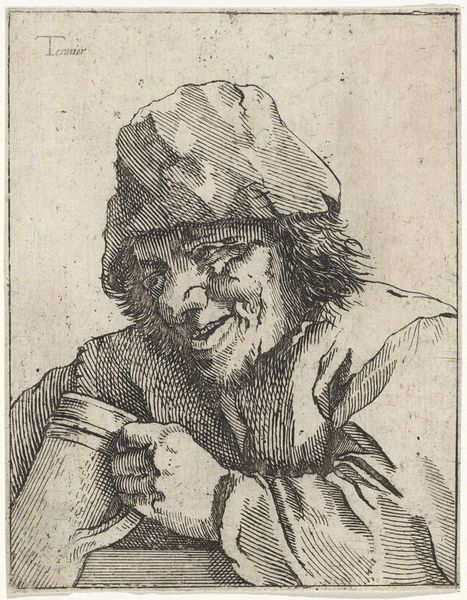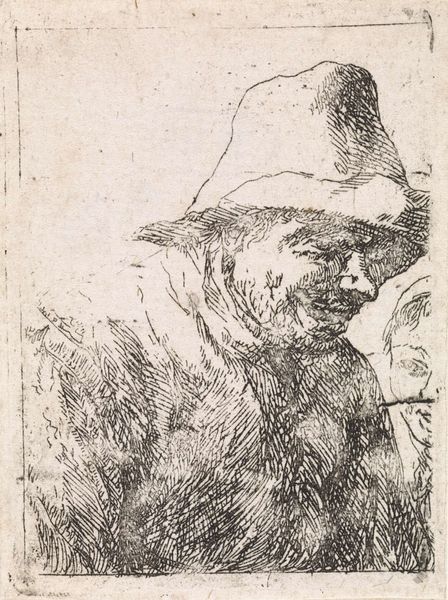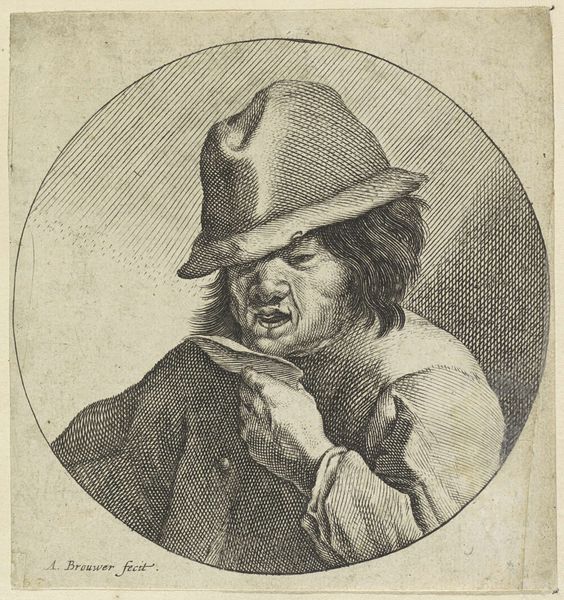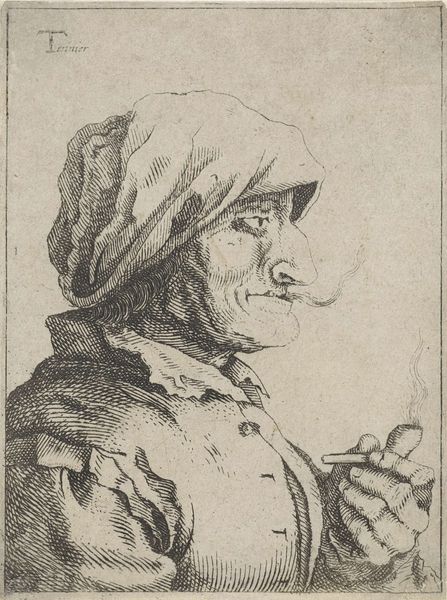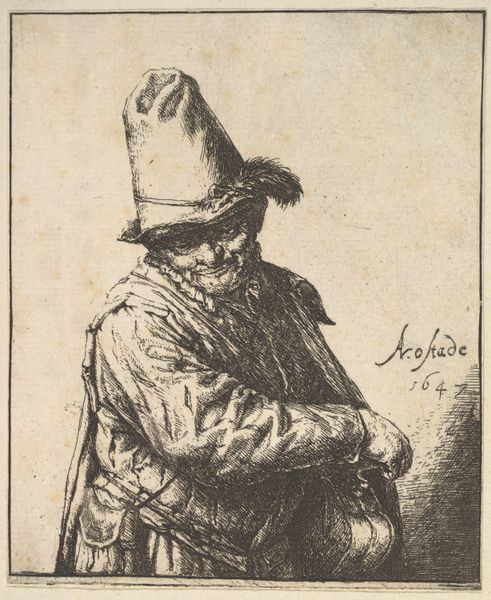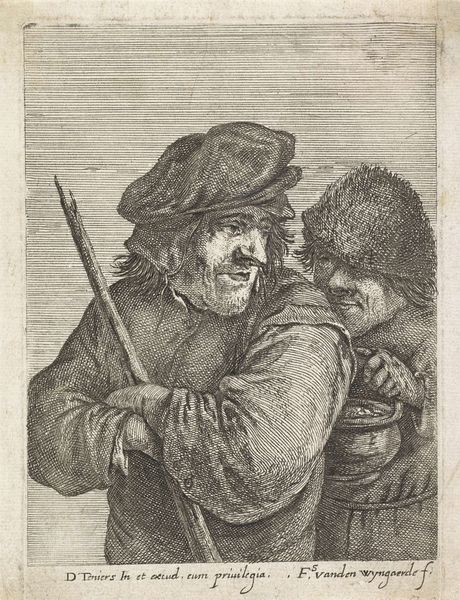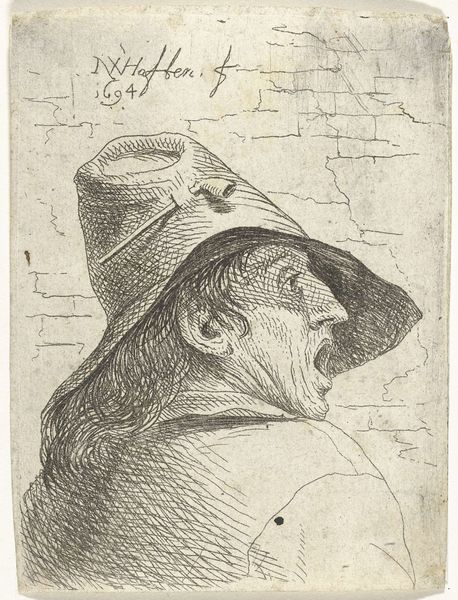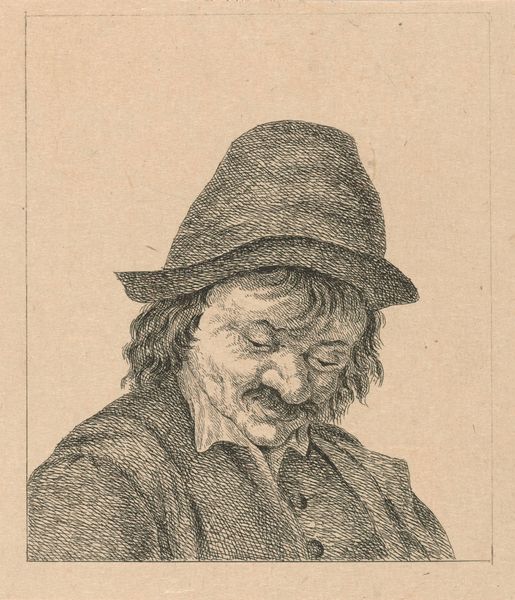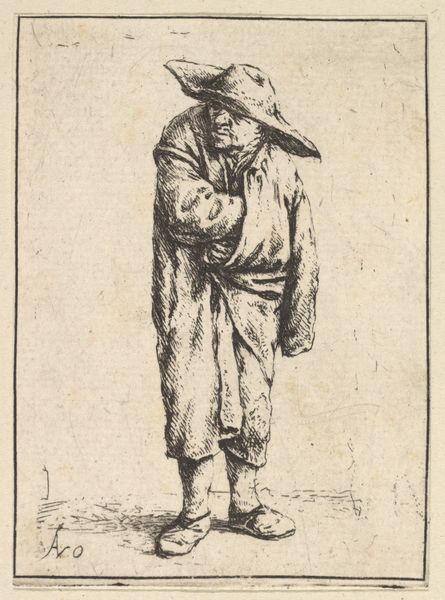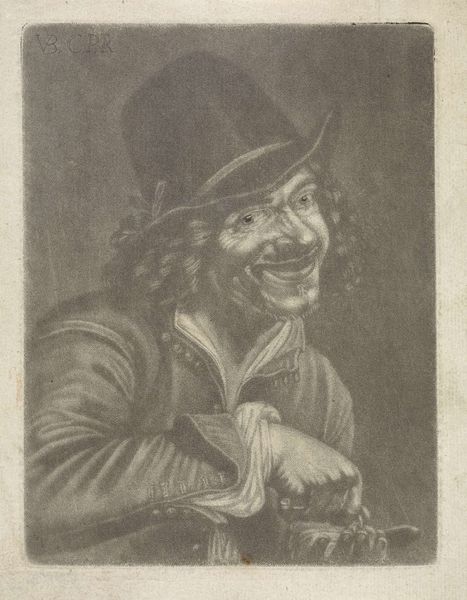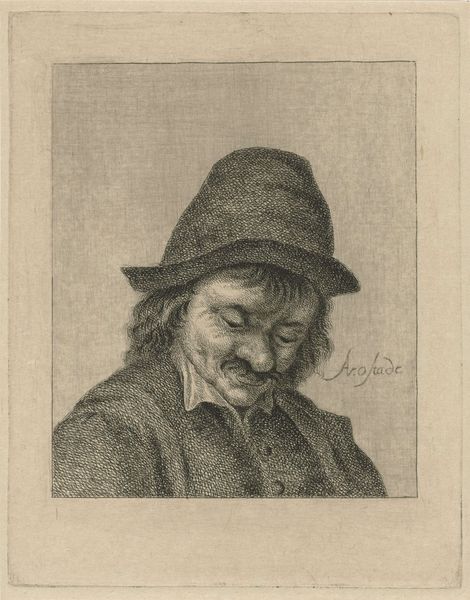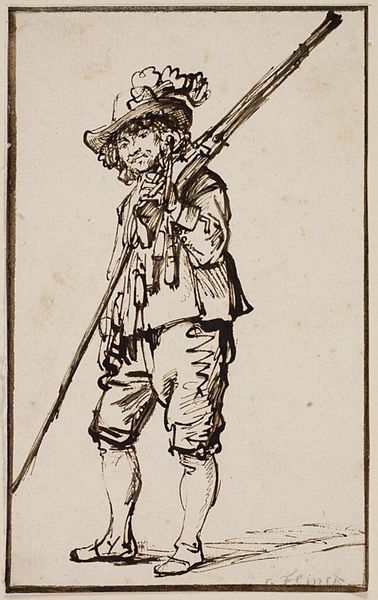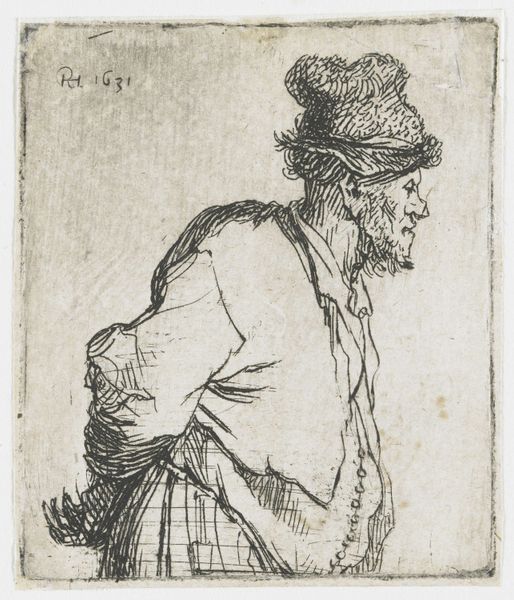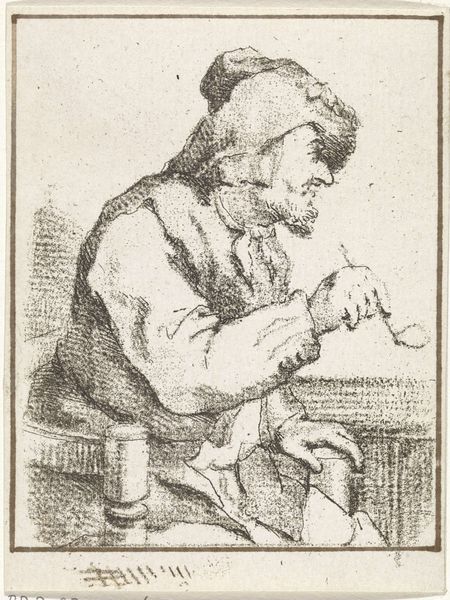
etching
#
portrait
#
baroque
#
etching
#
genre-painting
Dimensions: height 114 mm, width 84 mm
Copyright: Rijks Museum: Open Domain
Curator: Ah, here we have a rather curious etching, titled "Boer met een drinknap in zijn hand" which loosely translates to "Farmer with a drinking bowl in his hand." It comes to us from an anonymous artist, likely dating to somewhere between 1622 and 1688. The piece, a lovely example of Baroque artistry, can be found in the Rijksmuseum. Editor: It has such a raw energy, doesn’t it? The figure is disheveled and seemingly caught mid-sentence, or maybe mid-swallow. There's almost a theatrical quality to the fellow that contrasts quite strongly with what I expect to see in traditional baroque. Curator: That's perceptive. Etchings such as this served a purpose far beyond mere artistic expression. Consider the role these images played in shaping societal views—serving as documentation and influencing perceptions of the working class, farmers specifically. Were they flattering depictions, or caricatures reinforcing societal hierarchies? Editor: I see your point. Looking at it from that lens, the slightly grotesque features feel pointed. Is he meant to be funny, or a warning? Perhaps, a cautionary representation for the emerging middle class that showed where they did not want to go, class-wise? The angle of the hand suggests, if not need, then strong desire. Curator: Exactly. It reflects how images were tools in solidifying societal boundaries, reinforcing notions of who held power and who did not. Now, consider the intended audience for these prints—were they mainly consumed by the wealthier classes? How did they internalize these representations? It’s not just about the "art," it's about its social life. Editor: Yes. And it makes me think about contemporary representations too. The ways media shapes our perceptions of different social groups – immigrants, the homeless, those on social assistance, etc. This Baroque image almost echoes some of those modern, often harmful portrayals. It pushes us to examine the politics inherent in visual representation itself. Curator: Indeed, even centuries apart, the power dynamics remain eerily relevant. Thank you for pointing out this connection. I'll never look at 17th century genre paintings in quite the same way. Editor: The power of art history lies precisely there. Thank you.
Comments
No comments
Be the first to comment and join the conversation on the ultimate creative platform.
